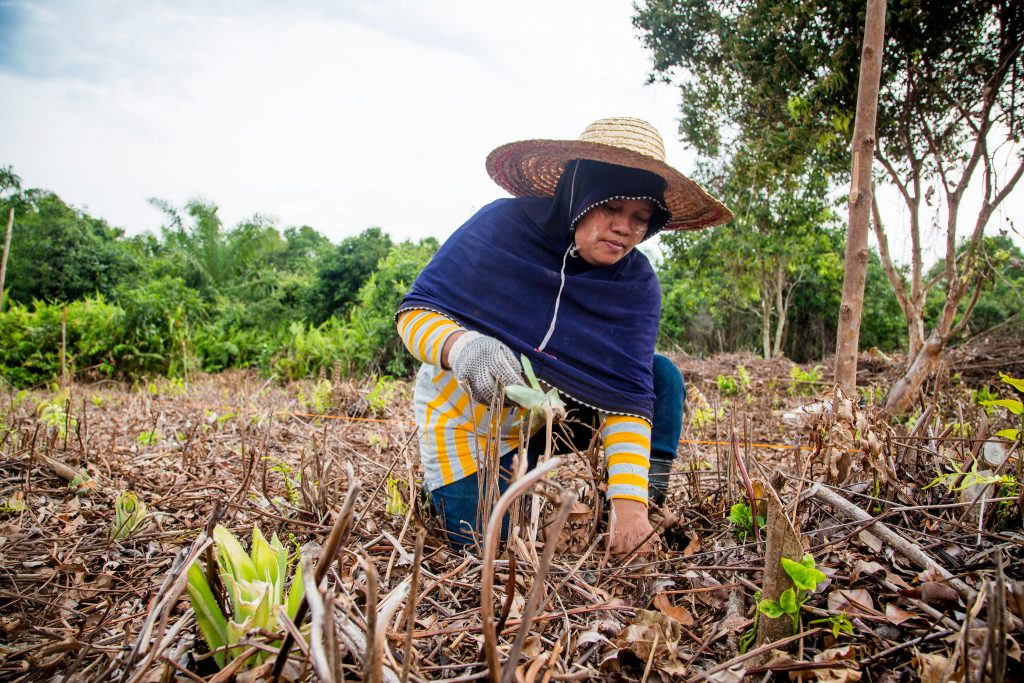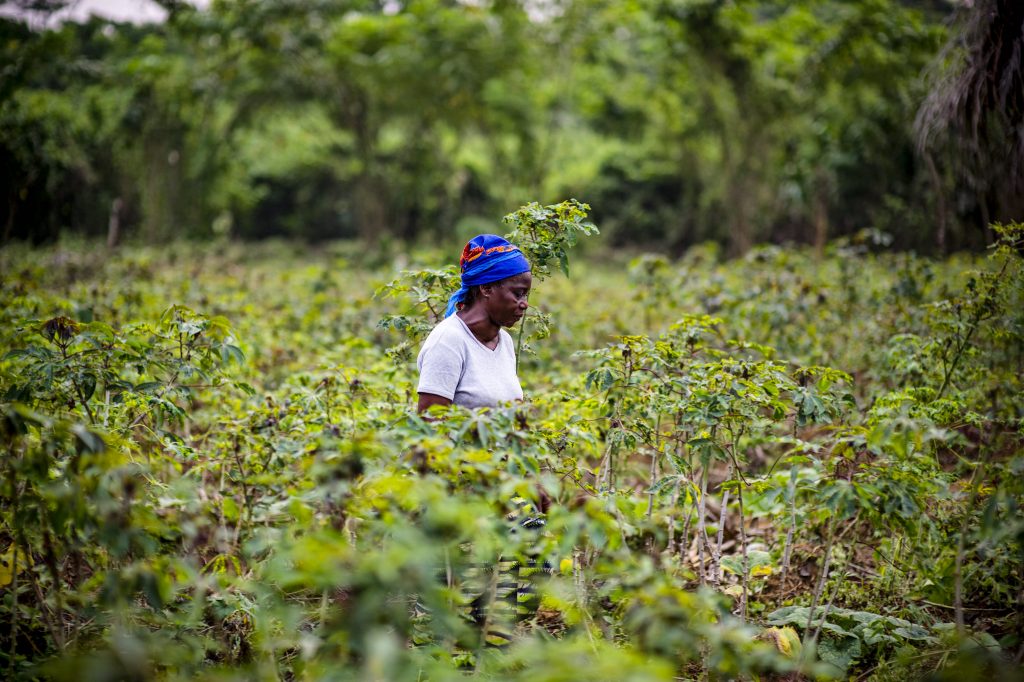Land degradation costs the global economy up to USD 10 trillion per year – or around 17 percent of gross world product. World leaders have recognized the problem and are now turning their attention to restoring the Earth’s degraded and deforested landscapes. The U.N. Decade on Ecosystem Restoration, which launched in June and will run through 2030, will ramp up efforts to combat land degradation across the globe.
But although the Decade will be driven by the latest biophysical science, a team of scientists has argued that policymakers need to pay greater attention to social and political considerations as well.
In a special issue of Ecological Restoration titled “Restoration for whom, by whom: Exploring the socio-political dimensions of restoration”, the scientists make the case for exploring these dimensions through the lens of feminist political ecology. The issue, reported on by IFPRI, The Alliance of Bioversity and CIAT, EurekAlert! and also picked up by Mongabay, features 11 studies examining the issues of equity and inclusion in ecological restoration.
We recently spoke with Marlène Elias, FTA’s Coordinator of Gender Equality and Social Inclusion who was co-guest editor of the special issue. Together with Deepa Joshi and Ruth Meinzen-Dick, Marlène is also authoring the introductory Perspective “A Feminist Political Ecology of Restoration” contained in the Special Issue.
Enjoy!
This interview has been edited for length and clarity.
In this important new article, you and your colleagues speak about “social and political dimensions of restoration.” Could you explain what you mean in simple terms?
We’re essentially talking about the politics, the power relations and the social relations that underpin restoration.
Often, because restoration is a field dominated by the natural sciences, it focuses more on the ecological aspects. What we’re trying to do is center people in that field. There have been several efforts to do that, but they often focus on the economic aspects, or they speak about participation and stakeholder engagement without really engaging with the power, politics and relational aspects of restoration. So, that’s what we’re trying to bring to the fore.

Photo by Aris Sanjaya/CIFOR
Can you give any examples, either positive or negative? Are there any correlations you would like to underline?
If we ignore power relations around who captures the benefits and plan interventions without thinking carefully about how resources are allocated and who participates in restoration projects, we run the risk of elite capture.
For example, one of the papers in the special issue talks about farmer-managed natural regeneration, and how interventions may ultimately benefit village chiefs and founding lineages the most, as they tend to have more privileged rights to land. So, it’s important to carry out a careful analysis of tenure and power relations among community members to prevent this elite capture.
The same goes for gender relations. If you’re not looking carefully at how labor is allocated within households, and you ask households to be in charge of providing labor for restoration, particularly unremunerated labor, then women could end up putting in labor without benefiting from it. The benefits might instead be directed to heads of household, who tend to be predominantly men in most of the contexts we work in.
So, if you don’t consider power relations and the norms that distribute labor and decision-making rights and responsibilities, and the distribution of benefits, you will run into skewed outcomes where the costs and benefits of restoration are not equitably distributed.
Restoration is one of the key FTA research domains, we have been working on those issues and developing innovations since day 1. For example, we recently released an options-by-context typology for people-centred nature-based land restoration through agroforestry. This typology can help linking knowledge with action in people-centric restoration in which all actors are brought to the table sharing responsibilities and roles. At the end of the day, empowerment of resource users and managers, including within multi-stakeholder processes, is the key component to successful restoration practices.
You use the term ‘feminist political ecology perspective.’ Why have you defined it as ‘feminist’, and what are the linkages to the historical feminist movement? How does it differ from mainstream ecological approaches?
Feminism has been linked to natural resource management issues in the past, and essentially centers the discourse on equality and equity issues. That’s precisely what we’re trying to do here. Specifically, feminist political ecology has many different dimensions, but we refer to three key dimensions that help us push our thinking forward in terms of how we conceptualize and practice restoration.
We mention the importance of thinking through power relations and also of looking at those relations at various scales to contexualize what’s happening from the local level to political and economic contexts and structures. We’re also really stressing the importance of taking that analysis and putting it in a historical perspective: what happens now is not detached from a historical trajectory in terms of power relations and political and economic contexts; and it has to be understood within that trajectory.
Restoration is inherently context-specific, but the points raised in your paper are universal as they deal with human rights. How can we reconcile that? Should we suggest that everyone should taking a feminist stance, or should we tailor our approach to the context?
What we’re proposing is more in line with a reflexive practice of restoration. We’re not saying that it will look the same when applied in different contexts, but we’re saying that the issues we raise do matter across the board. Thinking about power relations, scale and historical trajectories matters in any context. But how they will look once you carry out an analysis and engage with those issues is going to be contextually specific. I don’t think there’s necessarily a tension there; it’s really about applying that thinking in a reflexive and contextually-specific way.
What should you do when social norms are hindering or don’t comply with a feminist FLR approach? When would you advocate for a top-down approach (policies, laws, etc.) versus a bottom-up approach (e.g. knowledge, information, behavioral change)?
Change is usually a function of both top-down and bottom-up approaches. Big change is often initiated from people coming together, organizing and calling for change, which policy change then supports and reinforces. It’s not a linear process – it’s very iterative, so ideally, change should be supported through both approaches.
What we really try to emphasize in the special issue is that it shouldn’t be only a global agenda that dictates what happens on the ground. Instead, the agenda should be set by the priorities and aspirations of people who are directly engaging with and impacted by restoration. That’s where context specificity really matters. So, it’s about policies supporting self-directed change and creating an enabling environment to allow that self-directed change to thrive.

Do you think this paper fills a void in the current global discussion in FLR? What do you hope to achieve with the release of this special issue?
Yes, what’s exciting about the issue is that it’s brought so many people together around it. We’ve continued collaborating after this issue, so we’ve now produced an article that’s under consideration in another journal that looks at 10 people-centered rules for socially sustainable restoration. It essentially takes key learnings from across the special issue papers and organizes them as a set of actionable principles for restoration in terms of centering it on people and on the human and socio-political aspects of restoration.
So, that’s been quite exciting, and I hope that the combination of the special issue, the paper and all of the communications and outreach around them will have an impact. It comes just after the launch of the U.N. Decade on Ecosystem Restoration, which we’re trying to contribute to with the timing of this special issue. It’s been in the works for two years, but having it come out now is quite exciting. We’re hoping that it can be picked up and can contribute to the ongoing discourses and debates around restoration, many of which are now better integrating human and social considerations than in the past.
But as we point out in this special issue and subsequent paper: it’s not easy. It’s very complex; it’s very messy, and there are several reasons why it hasn’t been done in a systematic way. But there are definitely efforts made in that direction. We have to view all of these contributions and steps along a bigger trajectory, but we hope that it pushes us along.
Is there anything else you’d like to add?
This special issue and paper go beyond just thinking about restoration. They apply to everything we work on at FTA: the thinking and the approach can be applied more generally to natural resource management and to working in forestry and agroforestry landscapes. So, the hope is that it will also feed back into other discussions that are relevant to FTA and all those working in that area.
Revised by Ming Chun Tang
The special issue on ‘Restoration for whom, by whom: Exploring the socio-political dimensions of restoration’ is a collaborative initiative conducted under the umbrella of the CGIAR Research Programs on Forests, Trees and Agroforestry; Policies, Institutions, and Markets; and Water, Land and Ecosystems.











